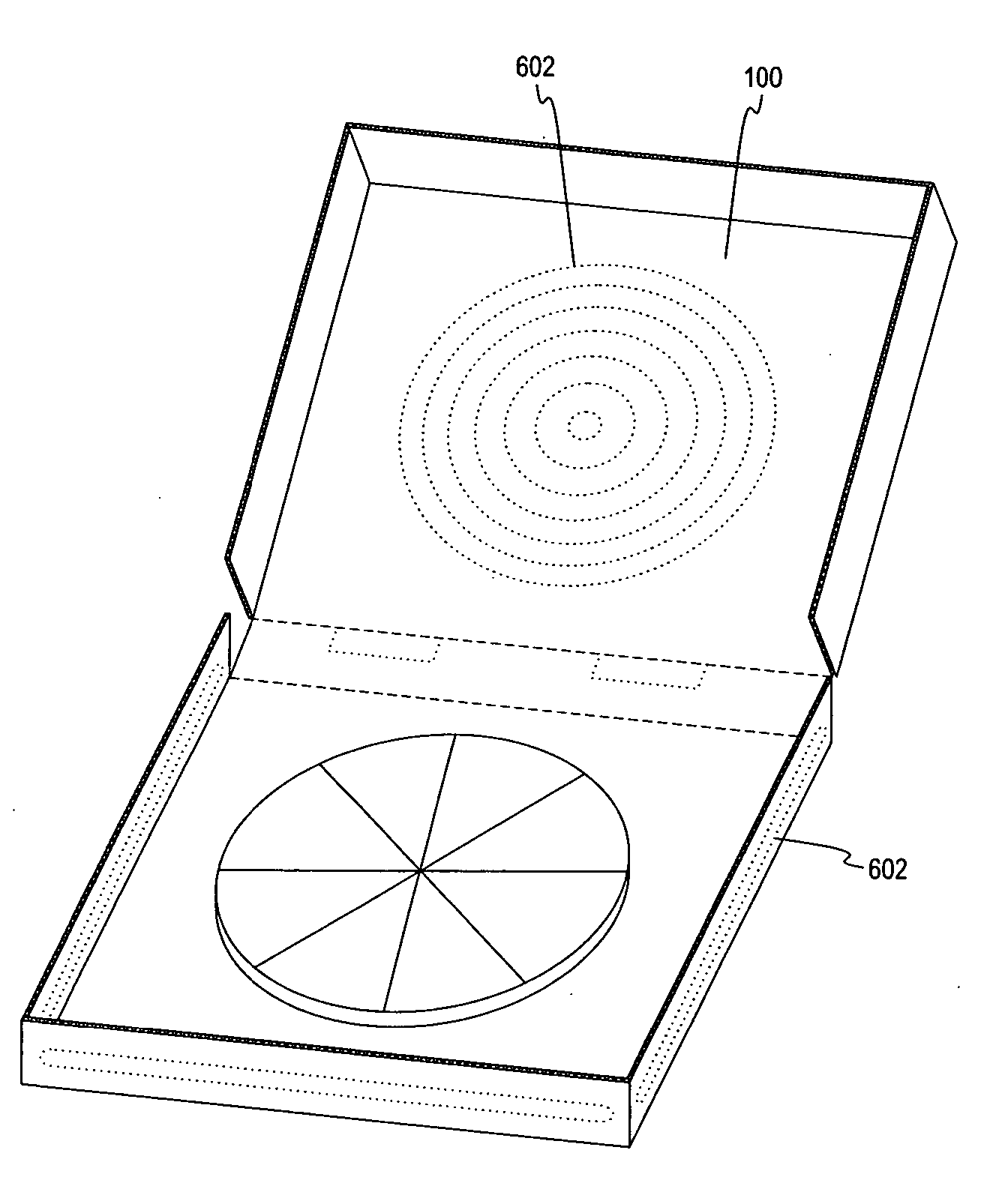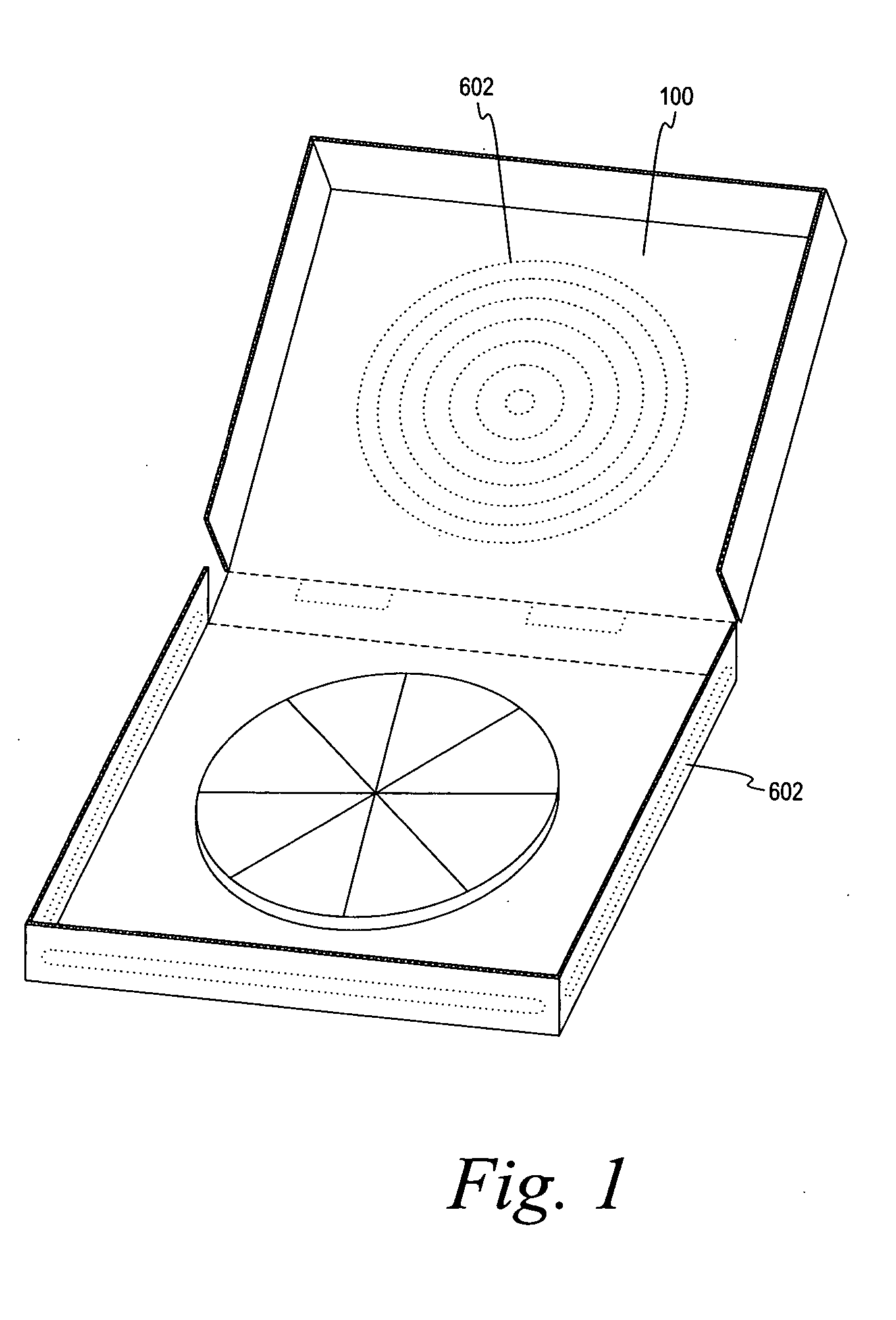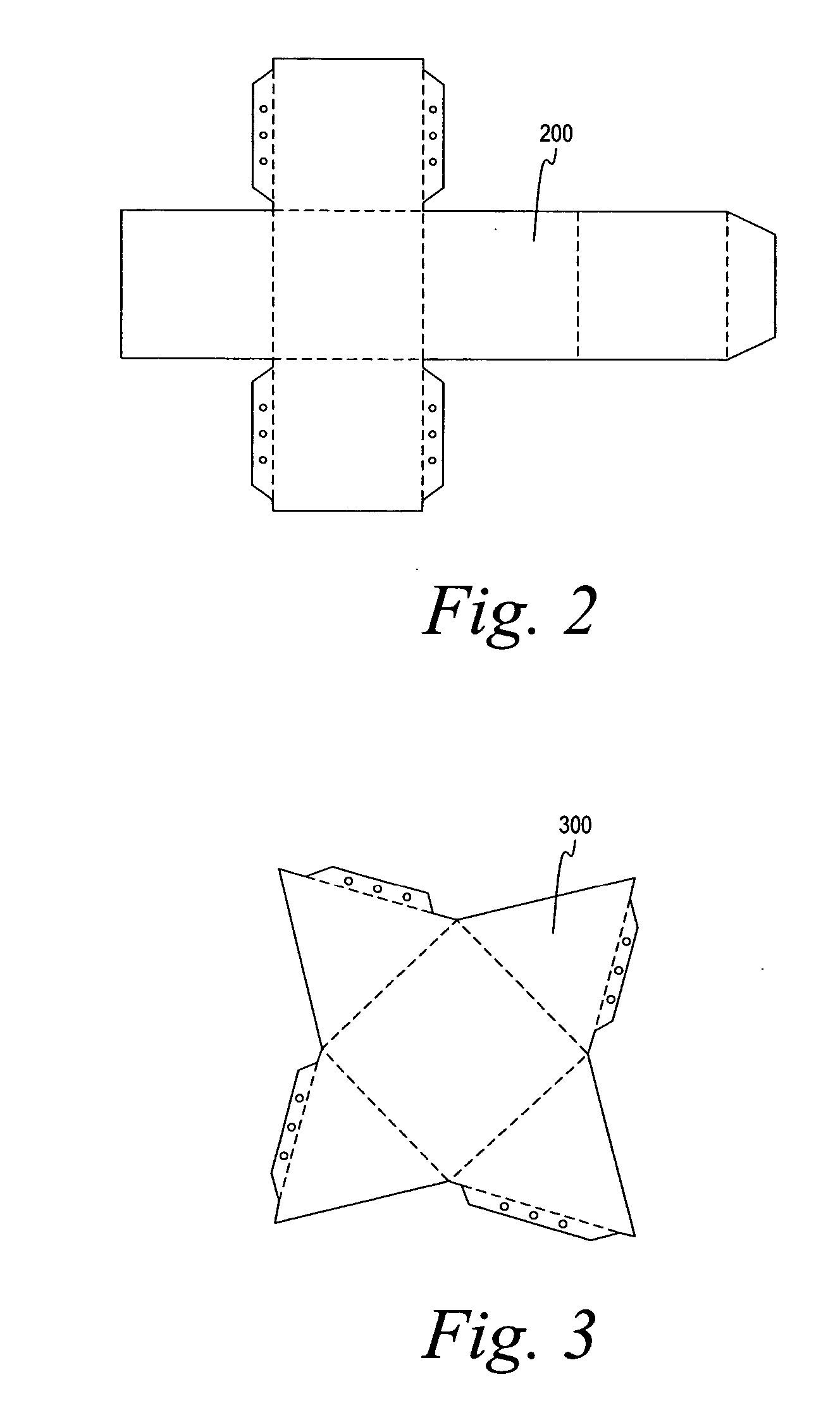Food container product
a food container and product technology, applied in the field of food containers, can solve the problems of unappealing food products on arrival, affecting the taste of products, and affecting the appearance of food products, and achieve the effect of affecting the taste of products
- Summary
- Abstract
- Description
- Claims
- Application Information
AI Technical Summary
Benefits of technology
Problems solved by technology
Method used
Image
Examples
example 1
[0030]
[0031] As also shown in this example, calculations of different surface areas are well known, as one may conveniently track or categorize a desired efficient surface area of insulation with a particular food product enclosed, and / or of a particular sized product and the like for the production and availability of customized food containers, if so desired, depending on such factors as delivery time or expected travel time and the like. Customized container strength may also be calculated and employed as desired using different geometric flute configurations for desired resulting rigidity or flexural stiffness, such as for delicate entrees, as opposed to pizza.
[0032] A typical pizza delivery box configuration (100) for use with the present invention is shown in FIG. 1. Other unassembled or non-folded pizza or food transport or deliverable containers for use with the invention are shown, respectively, in FIGS. 2-3 (200) (300). As shown in FIG. 4, each of the different geometric ...
example 2
[0038] As can be seen in Example 2, this type of construction of a series of connected arches, or other type of flute configuration as desired, provides the ability to support strong weights, and comprises considerable rigidity and resistance. As an added benefit, air circulating within the flute structure also serves as an insulator, in addition to the aluminum sheet or other applied insulation, thereby providing excellent protection against temperature variations and to ensure product quality preservation. Some of the many other attributes of corrugated construction of food containers are crush-resistance, tear, tensile and burst strength, impact, drop and vibration damage resistance, in addition to uniform stacking and weight distribution.
[0039] As also discussed above, depending upon the end use results contemplated, and the structural stiffness and rigidity desired, and also to a degree the extent of insulating qualities desired, many types of corrugated configurations with di...
PUM
 Login to View More
Login to View More Abstract
Description
Claims
Application Information
 Login to View More
Login to View More - R&D
- Intellectual Property
- Life Sciences
- Materials
- Tech Scout
- Unparalleled Data Quality
- Higher Quality Content
- 60% Fewer Hallucinations
Browse by: Latest US Patents, China's latest patents, Technical Efficacy Thesaurus, Application Domain, Technology Topic, Popular Technical Reports.
© 2025 PatSnap. All rights reserved.Legal|Privacy policy|Modern Slavery Act Transparency Statement|Sitemap|About US| Contact US: help@patsnap.com



